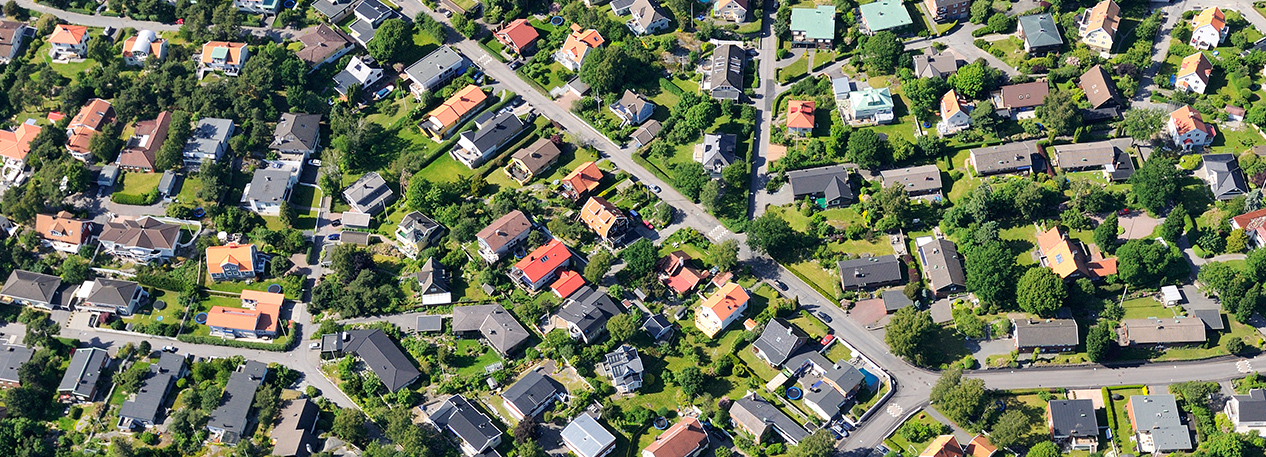Within the U.S. mortgage market, it is reasonable to expect lending activity to increase when housing markets boom. But certain market participants sometimes go against the grain; paradoxically, they are incentivized to boost lending when markets appear likely to become fragile. In their paper, “Concentration in Mortgage Markets: GSE Exposure and Risk-Taking in Uncertain Times,” Ronel Elul, Deeksha Gupta, and David Musto describe how two such participants — Fannie Mae and Freddie Mac — may have deliberately increased their mortgage purchases during the first half of 2007, on the eve of a cascade of mortgage defaults that triggered a broader financial crisis.
The evidence in their paper supports the notion that the two participants (referred to as government-sponsored enterprises, or GSEs) intentionally purchased riskier mortgages that originated in specific metropolitan areas. The analysis shows that the two GSEs stood to benefit by targeting their purchases in this way, because the purchases supported the value of mortgages already held in their portfolios.
By way of background, the paper explains that in their own unique way, the GSEs are the largest participants in the mortgage market, even though they do not actually issue mortgages. Instead, they buy mortgages issued by traditional lenders and then bear the risks of those mortgages (and insure some of them against default).1 By providing this backstop, the GSEs foster the creation of new mortgages, thereby maintaining a credit pipeline that in turn supports the housing market.
As noted above, the idea that the GSEs deliberately shored up the value of their mortgage portfolios in early 2007 is supported by the timing of their purchases, particularly as mortgage defaults became more likely. But in addition to how the purchases were timed, is it possible to pinpoint where and how they were conducted? Elul, Gupta, and Musto designed a test that helps answer this question.
To explore how the GSEs identified the ideal mortgages to buy, the authors look at what criteria the GSEs abided by. Were the GSEs breaking away from their usual practice of buying mortgages in an automated (and therefore less discretionary) way? To find out, the economists focus on GSE purchases above and below a well-known threshold that distinguishes between discretionary and automated purchases: the FICO score of the borrower associated with each loan. Specifically, for each borrower whose score is below 620, the associated loan is a candidate for discretionary purchase activity. Meanwhile, loans to applicants who score above 620 are more likely to be purchased automatically, with less scrutiny of the borrower's overall creditworthiness, due to their solid credit rating.
The analysis confirms that discretionary purchases played a significant role in the first half of 2007. The economists report a significant rise in overall GSE activity within metropolitan areas that were already represented in their portfolios, and they show, furthermore, that in these areas the GSEs were more likely to purchase mortgages that tended to have credit scores below the 620 threshold. In a further indication of discretionary buying, the GSEs focused on housing markets in which their efforts were more likely to succeed.2 Across all of these dimensions, the authors observe that GSE activity appears to be deliberate — not random or coincidental. All told, they find that, in early 2007, the GSEs took explicit steps to protect the valuations of their investment portfolios; the GSEs didn't just passively or indiscriminately buy whatever random loans happened to be available for purchase (a pool that actually grew bigger as other buyers, especially private firms, retreated from the marketplace).
As part of their assessment, the economists consider alternative explanations for why the GSEs purchased this specific group of mortgages. They investigate, for instance, whether the purchases can be explained by the GSEs’ broader housing goals, which are often imposed by Congress. They find no obvious support for these other explanations, concluding that they do not drive any of their research results.
The GSEs’ purchasing activity, the authors write, likely “… increase[d] the fragility of … the economy as a whole” by encouraging risky lending in a mortgage market that was already laden with risk. They warn that the same dynamic could play out in the future, in light of the GSEs’ increased market presence since the COVID-19 pandemic set in. Similar to what transpired in early 2007, the GSEs may have a strong incentive to support housing prices in those markets that figure prominently in their portfolios. If they were to act on that incentive, they might stimulate the issuance of mortgages to less creditworthy borrowers, and risk exacerbating a wave of mortgage defaults.
- The views expressed here are solely those of the authors and do not necessarily reflect the views of the Federal Reserve Bank of Philadelphia or the Federal Reserve System.
- The GSEs also pool these mortgages and package them into securities that are sold to subsequent investors (while still guaranteeing them against the risk of default). Taken together, the GSEs’ activities are said to take place in the secondary market for mortgages.
- The authors find that the GSEs’ efforts were strongest in areas where housing supply was most inelastic— that is, where the supply of homes does not respond too strongly to changes in price levels. This means, for instance, that supply does not expand rapidly when markets boom, which helps protect against declining prices when a boom ends.
